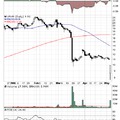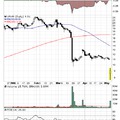Why Traders Stop Trading?
Assume a trader has a method – mechanical, discretionary, or a combination of both – that she has been using successfully. Also assume that she understands both herself and the business of trading, and wants to continue trading. Why would she stop trading that system?
Here are a few possibilities:
- The results are too good.
- The results are not worth the effort.
- The results are not worth the stress.
- She has enough money.
- There is a serious drawdown.
1. Results are too good
She is afraid that this cannot possibly continue.
Her system – any system – works when the logic and the data are synchronized. There are many reasons why systems fail and should be taken offline, but a sequence of winning trades should be seen as a success.
She should continue trading it until one of the other reasons to stop happens.
2. The results are not worth the effort
There is not much gain, but not much loss either. On balance, the time, energy, and resources would be more productively applied doing something else.
The problem is with the system. She can return the system to development and try to refine it; or take it offline and periodically review its performance.
3. The results are not worth the stress
Performance is satisfactory, but at a high cost – worry and loss of sleep. Regardless of the position size indicated by the distribution of risk, the positions being taken are too large.
She should either reduce position size or have someone else execute the trades.
4. She has enough money
Not matter how good a system is, there is always a risk of serious loss.
When she has reached her goal, she should retire.
5. There is a serious drawdown
The magnitude of the drawdown needed for it to be classified as serious is subjective. Among my colleagues and clients, those who manage other people’s money typically want drawdown limited to single digits. Those trading their own money may be willing to suffer drawdowns of 15 or 20 percent.
But there is a level at which everyone stops trading the system – preferably while the account still has a positive balance.
My view is that experiencing a large drawdown is the primary reason people stop trading a system.
What causes a large drawdown and how should the trader react to it?
- The system is broken.
- There was an unexpected sequence of losing trades.
- The system is out of synch.
- The position size is too high.
As the account balance drops from an equity high into a drawdown, it is not possible to determine which is The reason.
All of the reasons are true to some extent. A system that is broken breaks because the logic and the data become unsynchronized, causing an unexpected sequence of losing trades and at a time when position size was too high for conditions.
The solution is two-fold
- Continually monitor system performance and system health.
- Modify position size to reflect recent performance.
During the trading system development process, a baseline of system performance is established. Using the out-of-sample trades from the walk forward phase is a good source of this data. Personal risk tolerance and system risk, taken together, determine position size for that system performance. As system performance changes, position size must also change.
Position size varies in response to system health.
Conclusion
Do not continue to trade a system that has entered a serious drawdown expecting that it will recover. It may recover on its own; it may require readjustment; or it may be permanently broken and never work again.
Take it offline and either observe it until recent paper-trade results demonstrate that it is healthy again, or send it back to development.
The correct position size for a system that is broken is zero.
A bejegyzés trackback címe:
Kommentek:
A hozzászólások a vonatkozó jogszabályok értelmében felhasználói tartalomnak minősülnek, értük a szolgáltatás technikai üzemeltetője semmilyen felelősséget nem vállal, azokat nem ellenőrzi. Kifogás esetén forduljon a blog szerkesztőjéhez. Részletek a Felhasználási feltételekben és az adatvédelmi tájékoztatóban.

